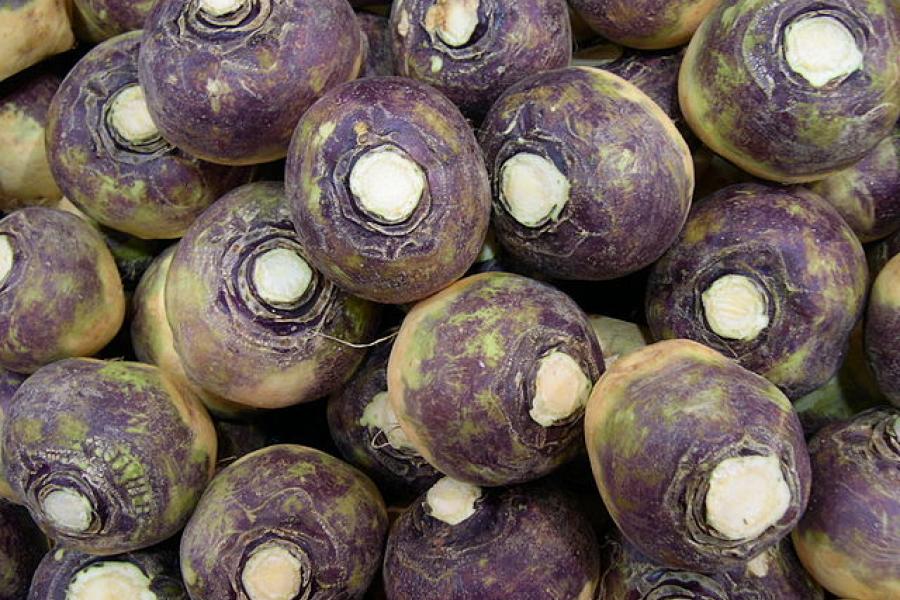Rutabaga
It is thought to be the product of a cross between cabbage and turnip.
Rutabaga is also known as yellow turnip, Swedish turnip or swede.
The rutabaga is a large globular root with a light orange to yellow flesha and purple, white or yellow skin. Although it is known as yellow turnip, its flavor is completely different.
The rutabaga was first grown as animal fodder and only later became human food. It has been added to mutton stews and hotpots, and made into pasties.
Rutabaga trivia
Lanterns made of hollow rutabagas were usual in England before pmpkins became common.
Rutabaga is part of the traditional meal of haggis, tatties and neeps - haggis, potatoes and rutabaga - the Scotish people eat on Burns Night - end of January.
Nutritional value
A serving is 1 cup (140g) of raw diced rutabaga.
As most of the brassicas, rutabaga is a good source of vitamin C, although there are some other vitamins. It also has minerals mainly calcium, potassium, magnesium and and iron, fiber and a little protein.
A serving of rutabaga has only 50 calories. It is a good vegetable to include in a weight loss diet.
Preparation and use
Rutabaga can be cooked in the same ways as turnips. It is a great addition to soups and stocks, stews, or add chunks of rutabaga to the roast pan to have an easy side dish. Rutabaga can also be baked, roasted, boiled or steamed on its own or together with other vegetables. Popular combinations are:
- Rutabaga and carrot mash
- Rutabaga, carrot and potato mash
- Rutabaga and celeriac (celery root) baked or roasted.
Storage
Choose rutabagas that are firm, smooth and feel heavy for their size.
- Fridge – refrigerate in a perforated plastic bag for up to 2 weeks. Much better inside the vegetable drawer.
Rutabaga - yellow turnip, swede, Swedish turnip, snagger.
brassica napus napobrassica (Cruciferae)

